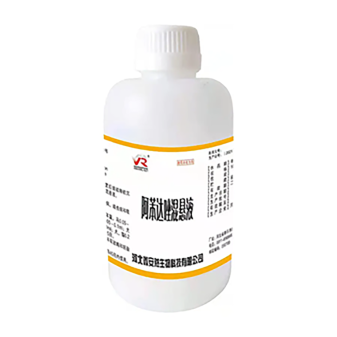- Afrikaans
- Albanian
- Amharic
- Arabic
- Armenian
- Azerbaijani
- Basque
- Belarusian
- Bengali
- Bosnian
- Bulgarian
- Catalan
- Cebuano
- Corsican
- Croatian
- Czech
- Danish
- Dutch
- English
- Esperanto
- Estonian
- Finnish
- French
- Frisian
- Galician
- Georgian
- German
- Greek
- Gujarati
- Haitian Creole
- hausa
- hawaiian
- Hebrew
- Hindi
- Miao
- Hungarian
- Icelandic
- igbo
- Indonesian
- irish
- Italian
- Japanese
- Javanese
- Kannada
- kazakh
- Khmer
- Rwandese
- Korean
- Kurdish
- Kyrgyz
- Lao
- Latin
- Latvian
- Lithuanian
- Luxembourgish
- Macedonian
- Malgashi
- Malay
- Malayalam
- Maltese
- Maori
- Marathi
- Mongolian
- Myanmar
- Nepali
- Norwegian
- Norwegian
- Occitan
- Pashto
- Persian
- Polish
- Portuguese
- Punjabi
- Romanian
- Russian
- Samoan
- Scottish Gaelic
- Serbian
- Sesotho
- Shona
- Sindhi
- Sinhala
- Slovak
- Slovenian
- Somali
- Spanish
- Sundanese
- Swahili
- Swedish
- Tagalog
- Tajik
- Tamil
- Tatar
- Telugu
- Thai
- Turkish
- Turkmen
- Ukrainian
- Urdu
- Uighur
- Uzbek
- Vietnamese
- Welsh
- Bantu
- Yiddish
- Yoruba
- Zulu
डिस . 13, 2024 11:23 Back to list
disinfection of poultry house
Disinfection of Poultry Houses Ensuring Health and Safety in Poultry Farming
Poultry farming is a vital component of the agricultural sector, providing a significant source of protein for billions of people worldwide. However, it is also susceptible to various diseases that can devastate flocks and pose serious threats to human health. One of the critical aspects of maintaining the health of poultry is the effective disinfection of poultry houses. This article explores the importance of disinfection, the methods used, and best practices to ensure a safe environment for poultry.
The Importance of Disinfection in Poultry Farming
Disinfection is essential in poultry farming for several reasons. Firstly, poultry houses can become breeding grounds for pathogens, such as bacteria, viruses, and parasites, which can lead to outbreaks of diseases like avian influenza, Newcastle disease, and coccidiosis. These diseases not only impact the health and productivity of the birds but can also have severe economic consequences for farmers.
Moreover, some pathogens can persist in the environment, surviving on surfaces and equipment long after the infected birds have been removed. This persistence means that if biosecurity measures are not implemented rigorously, the risk of re-infection and disease transmission remains high. Therefore, regular and thorough disinfection is a fundamental component of biosecurity protocols in poultry farming.
Disinfection Methods
There are various methods employed for disinfecting poultry houses, each with its advantages and drawbacks. The choice of method often depends on the specific needs of the farm, the type of pathogens present, and the resources available.
1. Chemical Disinfectants Chemical agents are widely used for disinfecting poultry houses. Common disinfectants include chlorine compounds, quaternary ammonium compounds, hydrogen peroxide, and iodine-based solutions. These chemicals can effectively kill a broad spectrum of pathogens when used correctly. However, it is crucial to follow the manufacturer's instructions regarding dilution, application methods, and contact times to ensure efficacy while avoiding toxicity to the birds.
2. Heat Treatment High temperatures can effectively kill pathogens. Steam cleaning and hot water washing are methods that can be employed in poultry houses. While they require more energy and resources, heat treatment is environmentally friendly and leaves no chemical residues.
3. UV Light Ultraviolet (UV) light is another promising method for disinfection. UV lights can be installed to continuously disinfect air and surfaces in poultry houses. While they are effective at killing pathogens, UV light systems require proper maintenance and safety precautions to prevent harm to both poultry and farm workers.
disinfection of poultry house

4. Biological Disinfectants These are composed of naturally occurring microorganisms that outcompete or inhibit pathogenic organisms. They are often seen as a more sustainable alternative to chemical disinfectants. However, their effectiveness may take longer to achieve comparative results.
Best Practices for Effective Disinfection
To maximize the efficacy of disinfection efforts, poultry farmers should adhere to several best practices
1. Thorough Cleaning Before disinfection, it is vital to clean the poultry house thoroughly. This involves removing organic matter, such as droppings, litter, and feed residues, as these can shield pathogens from disinfectants and reduce their effectiveness.
2. Proper Ventilation Ensuring adequate ventilation during and after disinfection is crucial. Proper airflow helps to disperse airborne pathogens and accelerate the drying process, which is important for certain disinfectants to work effectively.
3. Scheduled Disinfection Regularly scheduled disinfection routines should be established, particularly when moving birds in and out of the house. This ensures that the environment remains conducive to the health of the flock.
4. Training and Compliance All staff involved in poultry management should be trained on the importance of biosecurity and disinfection procedures. Compliance with protocols should be monitored to ensure effectiveness.
Conclusion
Disinfection of poultry houses is a crucial aspect of maintaining flock health and preventing disease outbreaks. By employing effective disinfection methods and following best practices, poultry farmers can create a safer environment for their birds, contributing to the overall sustainability and success of the poultry industry. With the continuous threat of emerging pathogens, the importance of rigorous disinfection protocols will remain pivotal in safeguarding public health and ensuring food security for the future.
-
Guide to Oxytetracycline Injection
NewsMar.27,2025
-
Guide to Colistin Sulphate
NewsMar.27,2025
-
Gentamicin Sulfate: Uses, Price, And Key Information
NewsMar.27,2025
-
Enrofloxacin Injection: Uses, Price, And Supplier Information
NewsMar.27,2025
-
Dexamethasone Sodium Phosphate Injection: Uses, Price, And Key Information
NewsMar.27,2025
-
Albendazole Tablet: Uses, Dosage, Cost, And Key Information
NewsMar.27,2025













